Structural Evolution of the Triple Chance, Thackaringa Area |
Copyright 2004-2009 by Roberto
Weinberg.
All rights reserved. Unlimited
permission to copy or use is hereby granted for non-profit driven
enterprise subject to inclusion of this copyright notice and my World
Wide Web URL: http://users.monash.edu.au/~weinberg. I would very much
appreciate an email stating how this material will be used. Thanks, RW.
DISCLAIMER. The material in this website has not undegone the scrutiny of Monash University and does not conform to its corporate outlook. It is entirely based on a free-spritied, curiosity-driven research effort by the author, and therefore in no way expresses the official position of the University.
DISCLAIMER. The material in this website has not undegone the scrutiny of Monash University and does not conform to its corporate outlook. It is entirely based on a free-spritied, curiosity-driven research effort by the author, and therefore in no way expresses the official position of the University.
Geological Map of the Elliptical Structures, NW Broken Hill Block
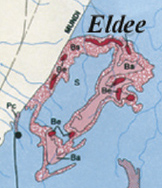 CLICK ON FIGURE FOR FULL MAP |
Deformation
| The deformation history of the outcrops exposed along 1km
extent of the railway line close to Triple Chance (0515215 x 6450265,
UTM 54J). This is one of the best outcrops for interference
pattern that I have seen .
Deformation in the area is characterized by four major events. D1 is characterized by upright tight F1 folds with leucosomes parallel to its axial planar foliation. F1 folds are preserved on the limbs of F2 folds (Fig. 1). D2 forms inclined folds that with consistent fold axes plunging moderately NE (Fig. 2a and b), and limbs striking N50-60W and dipping 50-60NE. This fold phase post-dates the melting event, and parts of the outcrop are entirely dominated by asymmetric folds representing one limb of a larger fold (Fig. 4-24 to be added). D2 are later folded by F3 NE-trending upright folds (N40E/73NW, laxis=NE/35), with fold axis controlled by the orientation of F2 limbs. Interference pattern is expressed at all level, from cm refolded biotite, to 10 cm folds (Fig. 4.25 still to come), at the metric and decametric scale (Figs 2 and 3). The interference pattern at outcrop allows prediction of the map scale interference pattern, which is indeed represented in the Thackaringa 1:25 000 maps. D4 a N25E/35SE normal shear zone with quartz veins that are otherwise continuous in F2 folds broken up and showing clear asymmetries indicative of normal movement. Crenulation axes trend 204/3. This deformation event clearly overprints F2 folds, but its age relative to F3 is unknown, because no overprinting relationships was found. Add photos from film 4.23 24 25 |
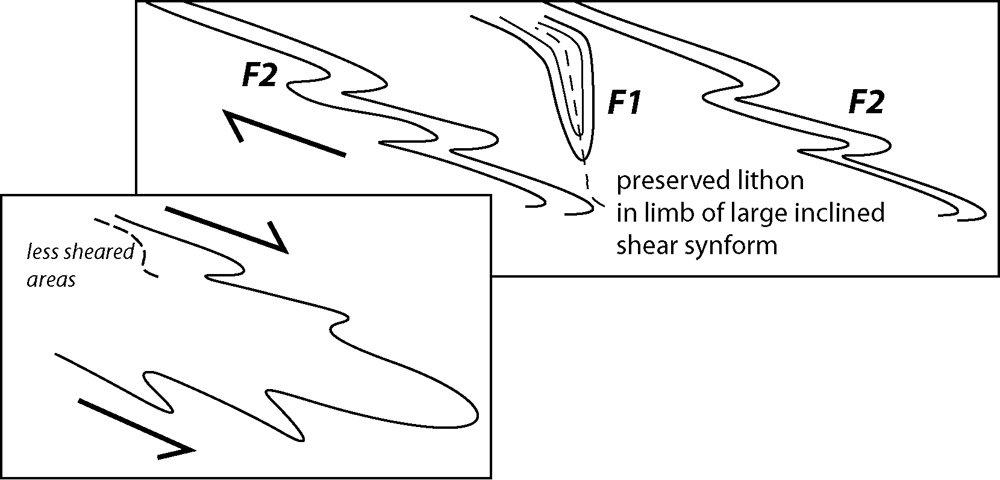 Fig. 1a. F1 folds preserved on the sheared limbs of a synformal inclined F2 fold. |
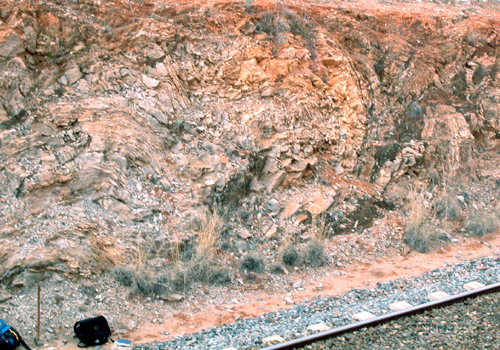 Fig. 2a. View towards the NNE of F2 folds refolded by F3. |
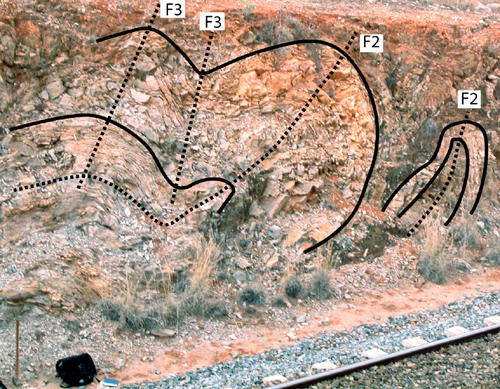
Fig. 2b. |
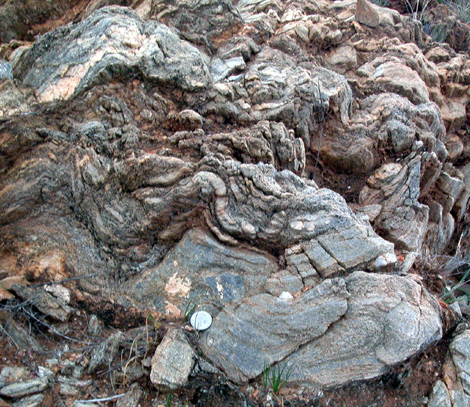
Fig. 3a. Same pattern as Fig. 2. |
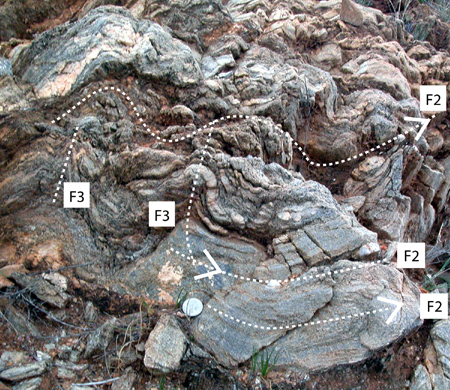 Fig. 3b. |